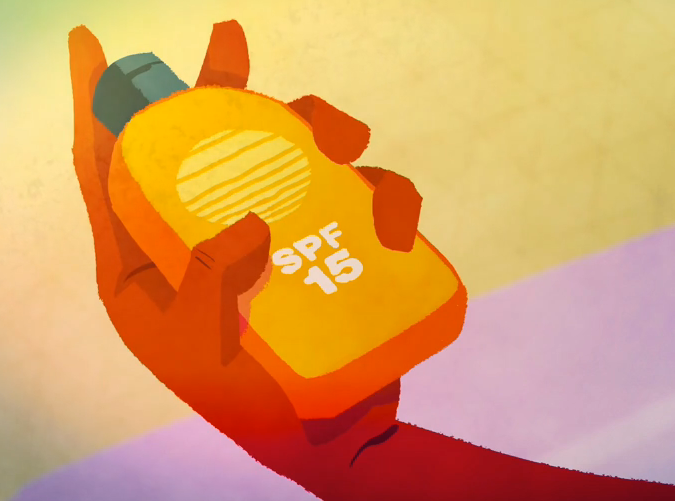If you plan on catching rays while splashing in a river or the ocean,
如果你打算在河流或海洋里玩耍时防晒,
keep in mind that carbon-based chemical sunscreens can harm marine life.
请记住,碳基的化学防晒剂会伤害海洋生物。
Take coral reefs, for example.
以珊瑚礁为例。
Although they cover less than 1% of the Earth's underwater surface,
尽管它们覆盖了小于1%的地球水下地表,
they're home to nearly 25% of all fish species, making them the most diverse and productive marine ecosystems.
但却是近25%的鱼类物种的家园,构成了最多样化和富有成效的海洋生态系统。
Research shows that carbon-based chemical sunscreen ingredients, like oxybenzone, butylparaben, octinoxate,
研究表明碳基的化学防晒成分,像氧苯酮,对羟基苯甲酸丁酯,甲氧基肉桂酸辛酯
and 4MBC contribute to a stress condition called coral bleaching in corals, which are living creatures.
和4MBC,会导致所谓的珊瑚白化困境,而珊瑚都是生命体。

Exposure to these organic compounds results in the death of the coral's symbiotic algae.
暴露于这些有机化合物会导致珊瑚共生藻类的死亡。
In addition to providing a reliable food source, these algae give coral their brilliant rainbow of colors.
除了提供可靠的食物来源,这些藻类给予了珊瑚彩虹般的缤纷色彩。
Without them, corals turn a bleached white and are susceptible to disease and possibly death.
如果没有他们,珊瑚会漂白,容易害病甚至死亡。
And once the coral dies, the entire reef ecosystem is not far behind.
而一旦珊瑚死亡,整个珊瑚礁生态系统也就不远了。
So you're now ready to make an informed choice when picking out your next sunscreen.
所以,你在挑选下一个防晒品时请做出明智的选择。
SPF is clearly labeled on the front.
SPF值被清楚地标示在前面。
On the back under "active ingredients,"
背面标注着“活性成分”,
you can find whether zinc oxide, titanium dioxide, and those coral-harming components are present.
你可以找到是否含有氧化锌,二氧化钛和那些珊瑚贻害成分。
Taking a bit more time to check can be well worth it for both you and the environment.
多花一点的时间来检查对您和环境来说意义非同一般。


